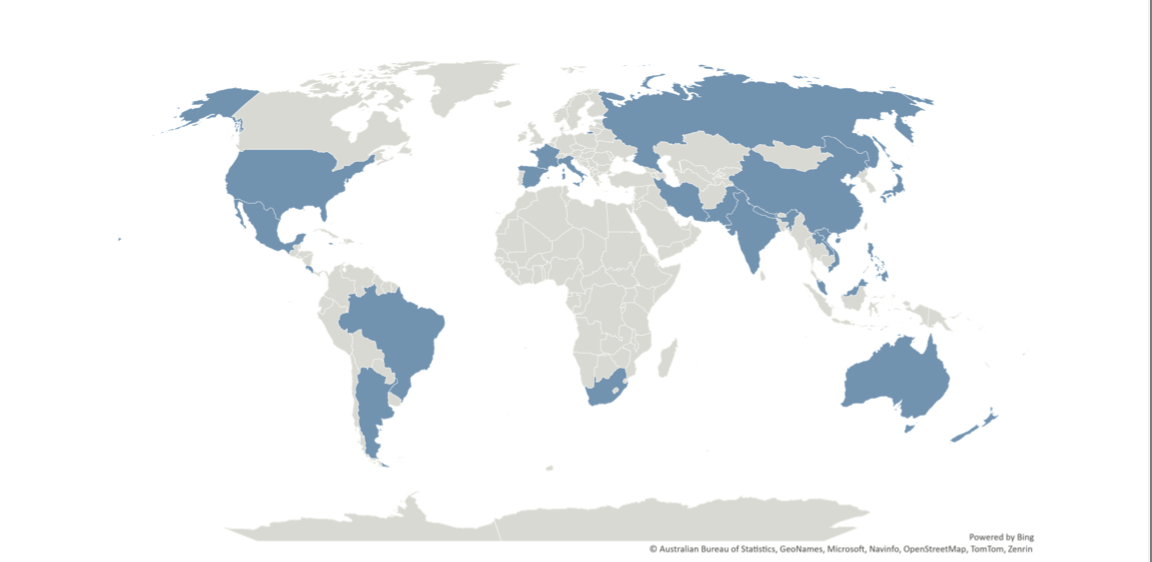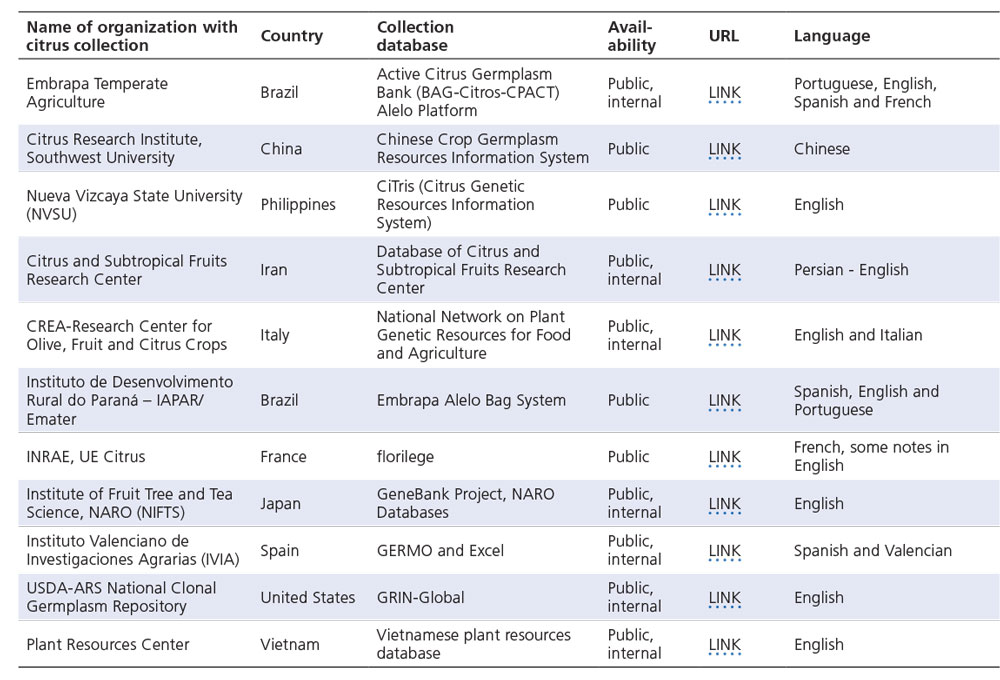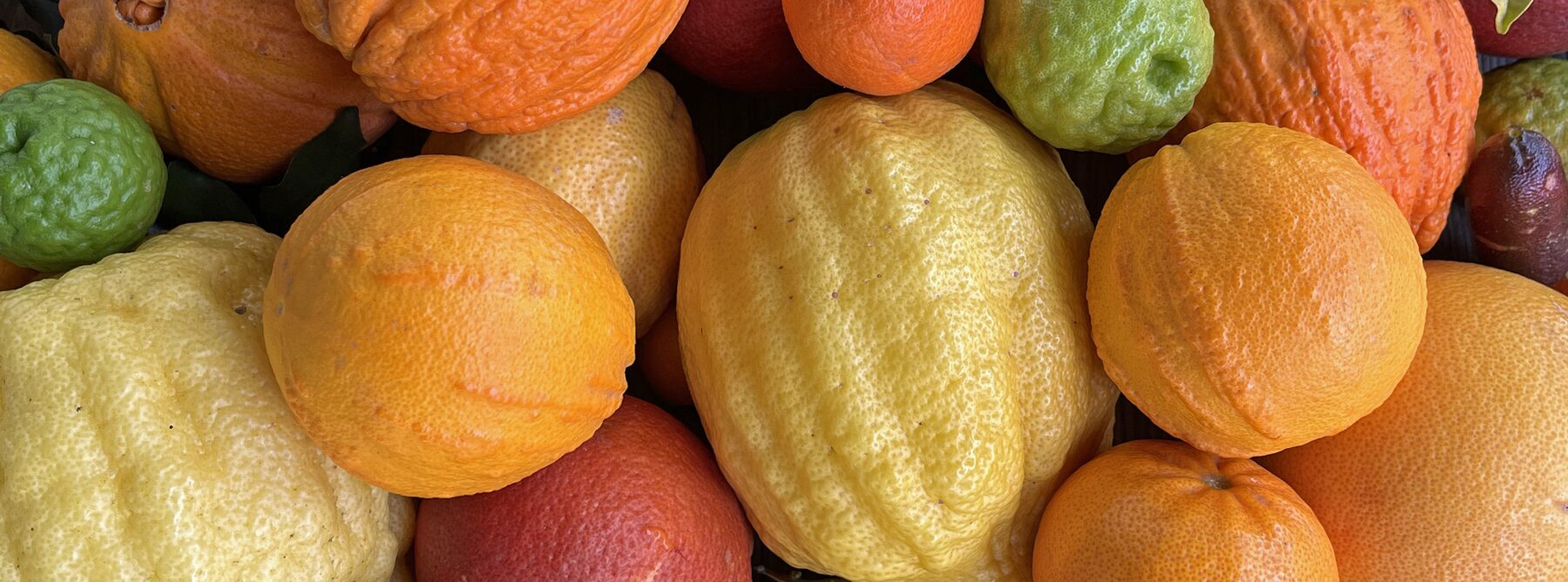A Global Strategy for the Conservation and Use of Citrus Genetic Resources
A global strategy for the conservation and use of citrus genetic resources was published in 2023 (Global Crop Diversity Trust 2023, DOI: 10.5281/zenodo.7757226). This document, developed with the input of a large number of experts, aims to provide a framework for the efficient conservation and effective use of globally important collections of Citrus genetic resources. This webpage provides a summary of some of the its key findings and of the recommendations for priority actions.
Size of collections and their locations
Data from the 2021 Global Citrus Survey revelaed a total of over 15,555 Citrus acessions conserved in 33 collections around the world.

Map of countries that were represented by respondents to the Citrus Collection Survey.
Key collections
Some of the largest collections are maintained by:
- Instituto Agronômico de Campinas/ Centro de Citricultura Sylvio Moreira, Brazil
- Citrus Research Institute, Southwest University, China
- USDA-ARS National Clonal Germplasm Repository for Citrus and Dates, United States
- Institute of Fruit Tree and Tea Science (NARO, NIFTS), Japan
- National Research Institute for Agriculture, Food and Environment (INRAE)-Corsica, France
- Queensland Department of Agriculture and Fisheries, Australia
Type of material
The largest number of genebank accessions were commercial and local cultivars, followed by materials for breeding, seedlings, and rootstocks, with some wild materials (Data from the 2021 Global Citrus Survey )

Number of ex situ citrus genetic resources reported in all survey responses that are classified in the listed categories.
Wild citrus
The table below shows wild Citrus species and relatives that are native to countries with survey respondents alphabetized by country (first two columns) and taxon (third and fourth columns). Data from the 2021 Global Citrus Survey.

Diseases and pathogens
The Table below shows the diseases and pathogens present in collections that responded to the survey are shown in the table below. Disease and pathogens that threaten collections and are tested for within collections are identified. Data from the 2021 Global Citrus Survey )

Data availability
The table below shows citrus collections with databases available to the public.

Recommendations for priority actions
Goal for global ex situ conservation of citrus: The diversity of citrus and its wild relatives is conserved and available in a disease and pathogen-free state in perpetuity in a secure, distributed network of genebank collections that provide collection data (passport, phenotypic, genotypic) in a standardized common information system.
- Increase citrus genebank community cooperation by establishing an international working group and developing/using a Citrus Community Information System (CCIS) for citrus and related genera.
- Support data collection and documentation efforts for citrus collections.
- Identify taxonomic gaps (cultivars and related genera) in citrus collections and fill gaps through collections and exchange.
- Increase citrus collection health and security (backup), particularly collections that have vulnerable unique plant genetic resources.
- Provide training opportunities for the citrus genebanking community on a wide range of topics— through a combination of affordable in-person and online options.
- Develop, maintain, and distribute materials from a clean, secure international citrus collection at one or more locations that captures taxonomic and genetic diversity of citrus.
Partners and donor
The development of this crop conservation strategy was funded by the German Federal Ministry of Food and Agriculture (BMEL) as part of the three-year project led by the Crop Trust: Breathing New Life into the Global Crop Conservation Strategies: Providing an Evidence Base for the Global System of Ex Situ Conservation of Crop Diversity. The Crop Trust also cooperated with the Secretariat of The International Treaty on Plant Genetic Resources for Food and Agriculture (ITPGRFA) in the development of this document.





